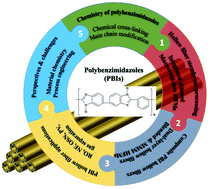Polybenzimidazoles (PBIs) and state-of-the-art PBI hollow fiber membranes for water, organic solvent and gas separations: a review
Abstract
As an attractive candidate material, polybenzimidazole (PBI) has been explored for fabricating hollow fiber membranes (HFMs) employed in liquid and gas separations since the 1970s. Some of its membranes have achieved industrial requirements under extremely harsh process environments (i.e., pH extremes, high temperatures, chlorine, organic solvents) due to its structural rigidity, robust mechanical stability, and outstanding chemical resistance. The development of high-performance industrially durable PBI HFMs is challenging owing to the complex interactions among the PBI polymer, solvents, and coagulant media during the non-solvent induced phase inversion process. State-of-the-art technologies have been developed to fabricate macrovoid-free PBI HFMs through non-solvent induced phase separation. Moreover, the chemically modified PBI membranes, PBI blended membranes and PBI composite membranes can not only improve the chemical resistance in organic solvents but also enhance the separation performance. The recently developed PBI gas separation HFMs also exhibit outstanding permselectivity and productivity exceeding the 2008 Robeson's upper bound for H2/CO2 separation at elevated temperatures (>200 °C). Therefore, this review aims to offer useful guidelines for researchers who are interested in PBI membranes for sustainable water and energy production. Both challenges and future opportunities of developing PBI-based HFMs will also be summarized and analyzed.

- This article is part of the themed collection: 2023 Journal of Materials Chemistry A Lunar New Year collection


 Please wait while we load your content...
Please wait while we load your content...